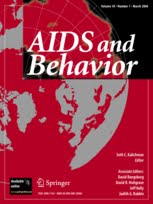Posted on September 15, 2017
Source: AIDS and Behavior

Economic Context and HIV Vulnerability in Adolescents and Young Adults Living in Urban Slums in Kenya: A Qualitative Analysis Based on Scarcity Theory
Larissa Jennings, Muthoni Mathai, Sebastian Linnemayr, Antonio Trujillo, Margaret Mak’anyengo, Brooke E. E. Montgomery, Deanna L. Kerrigan
Urban slum adolescents and young adults have disproportionately high rates of HIV compared to rural and non-slum urban youth. Yet, few studies have examined youth’s perceptions of the economic drivers of HIV. Informed by traditional and behavioral economics, we applied a scarcity theoretical framework to qualitatively examine how poverty influences sexual risk behaviors among adolescents and young adults. Focus group discussions with one hundred twenty youth in Kenyan’s urban slums were transcribed, coded, and analyzed using interpretive phenomenology. Results indicated that slum youth made many sexual decisions considered rational from a traditional economics perspective, such as acquiring more sex when resources were available, maximizing wealth through sex, being price-sensitive to costs of condoms or testing services, and taking more risks when protected from adverse sexual consequences. Youth’s engagement in sexual risk behaviors was also motivated by scarcity phenomena explained by behavioral economics, such as compensating for sex lost during scarce periods (risk-seeking), valuing economic gains over HIV risks (tunneling, bandwidth tax), and transacting sex as an investment strategy (internal referencing). When scarcity was alleviated, young women additionally described reducing the number of sex partners to account for non-economic preferences (slack). Prevention strategies should address the traditional and behavioral economics of the HIV epidemic.